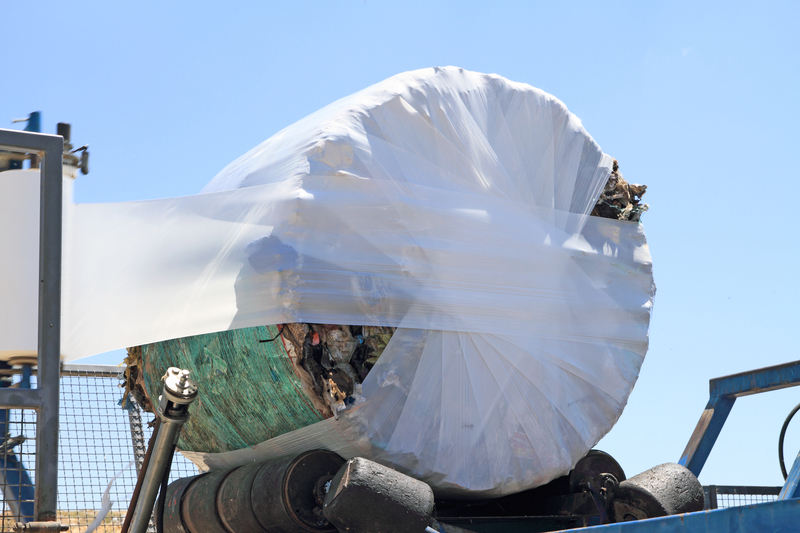Recognizing Hoarding: Ten Definitive Signs
Hoarding is a complex mental health disorder that affects millions worldwide. Unlike simple clutter, hoarding disorder involves the excessive accumulation of items and an inability to part with them, regardless of their actual value. This behavior can significantly impact a person's quality of life, physical health, and relationships. Identifying hoarding behaviors early is crucial for getting timely help. In this comprehensive article, we'll break down ten definitive signs of hoarding to help you recognize when someone may need support.

Understanding Hoarding Disorder
Before discussing the signs, it's essential to differentiate hoarding disorder from mere disorganization or collecting. Collectors typically organize and display their items, whereas individuals with hoarding disorder often accumulate things haphazardly, leading to unusable spaces and often unsafe living conditions. The main symptoms of hoarding go beyond an untidy house; they stem from deep-seated psychological challenges.
Why Recognizing Hoarding Matters
Early recognition of hoarding disorder is vital as the consequences extend beyond the individual. Hoarding can lead to:
- Health hazards due to unsanitary living conditions
- Increased fire risk from blocked exits and flammable clutter
- Family conflict and strained relationships
- Social isolation
- Legal issues or eviction
If you notice the following ten definitive signs of hoarding, it might be time to seek professional help, either for yourself or a loved one.
The Ten Definitive Signs of Hoarding Behavior
1. Chronic Difficulty Discarding Items
Perhaps the most telling sign of hoarding is a persistent struggle to part with possessions. Even items that are broken, expired, or of no discernible value are kept due to a perceived need to save them. The individual may experience intense distress at the thought of discarding things, regardless of their actual importance.
2. Living Spaces Flooded with Clutter
A hoarder's home typically features rooms so packed with items that they become barely usable. For example, beds become piled with belongings, kitchens are impassable, and bathrooms are filled with objects unrelated to their purpose. Clutter dominates the environment to the point where day-to-day functioning is impaired.
3. Uncontrollable Acquisition of More Items
Hoarders often can't resist the urge to acquire more objects, whether it's through daily purchases, collecting free items, or even picking things out of other people's trash. This "compulsive acquiring" intensifies clutter and worsens the hoarding cycle. Shopping sprees and frequenting garage sales are common behaviors.
4. Strong Emotional Attachment to Possessions
People struggling with hoarding disorder develop intense emotional connections to items that seem trivial to others. They may believe objects are unique, irreplaceable, or that discarding them is disrespectful. This leads to significant anxiety at the thought of losing possessions.
5. Procrastination and Indecision
Decision-making becomes paralyzing for individuals with hoarding disorder. They often find it impossible to choose what to keep, donate, throw away, or even store properly. This indecision leads to major delays in cleaning, organizing, or handling possessions, further increasing clutter over time.
6. Social Isolation and Shame
Many hoarders are acutely aware that their living situations deviate from social norms. As a result, they may stop inviting friends or family to their homes out of embarrassment or fear of judgment. This social withdrawal intensifies feelings of loneliness and can worsen mental health overall.
7. Conflicts with Family or Roommates
Hoarding rarely affects just one person. Shared spaces like living rooms or kitchens can become unusable, creating frustration, resentment, and even ultimatums from others. Family members might argue with the person about the state of the home, leading to chronic relationship stress or even separation.
8. Neglect of Daily Activities Due to Clutter
When entire areas become inaccessible, daily living is disrupted. It's not uncommon for those with hoarding disorder to forego cooking, bathing, proper hygiene, or even sleeping in beds because of overwhelming clutter. The mess can also block doors or walkways, raising the risk of falls or injury.
9. Sensitivity to Others Touching Belongings
Severe distress can occur if someone rearranges or discards a hoarder's possessions, even with the best intentions. This often leads the individual to be highly protective or even secretive about their home, rarely allowing anyone to intervene.
10. Deteriorating Home Conditions and Health Risks
Over time, recognizing hoarding becomes easier as the environment itself deteriorates. Stacks of papers, garbage, mold growth, rodent infestations, and unsanitary conditions are common. These hazards put everyone living in the home at risk for respiratory issues, infections, and accidents.
Additional Hoarding Symptoms and Variations
Hoarding doesn't look the same in every case. Some people hoard only one type of item, such as newspapers, clothing, or electronics. Animal hoarding, where someone accumulates more pets than they can care for, is a particularly severe and dangerous form.
- Paper hoarding (mail, magazines, books)
- Food hoarding (expired cans, unusable food items)
- Digital hoarding (excessive digital files or emails)
- Animal hoarding (keeping far more animals than can be provided for)
Recognizing symptoms of hoarding in these contexts is just as crucial, as the risks--including animal welfare and public health concerns--are significant.
Why Do People Hoard?
Understanding why people hoard helps reduce stigma and encourages empathy. The causes can include:
- Trauma or loss: Significant negative life events can trigger hoarding as a coping mechanism.
- Perfectionism: Fear of making a wrong decision about what to throw away.
- Fear of waste: Belief that every item might someday be useful.
- Emotional security: Items provide comfort or a sense of safety.
- Genetic or neurobiological factors: Family history and brain differences may increase risk.
Recognizing hoarding symptoms early can prevent escalation and help those affected rebuild functional, healthy lives.
How to Help Someone Struggling with Hoarding
Approaching a loved one about hoarding can be difficult--compassion, patience, and understanding are key. Here's what you can do:
- Educate Yourself: Understand the disorder and its challenges.
- Be Supportive, Not Critical: Avoid shaming or forcing change.
- Encourage Professional Help: Cognitive-behavioral therapy (CBT) is effective for hoarding disorder.
- Offer to Help, With Consent: Respect boundaries and privacy.
- Set Small, Manageable Goals: Tackle decluttering one area at a time.
- Celebrate Progress: Positive reinforcement goes a long way.
If safety is a concern--such as severe fire hazards or health risks--it may be necessary to involve local authorities or social services to ensure everyone's wellbeing.
What to Remember about Recognizing Hoarding
Hoarding is more than a bad habit--it is a chronic mental health condition that requires specialized understanding and treatment. Recognizing the signs of hoarding means being vigilant for patterns like:
- Persistent difficulty discarding possessions
- Severe clutter and loss of functional living space
- Distress at the thought of letting go of items
- Impacts on health, hygiene, and relationships
With the right support, individuals with hoarding disorder can make significant improvements. Early recognition, empathy, and professional intervention are the cornerstones of recovery.

Frequently Asked Questions on Recognizing Hoarding
How is hoarding different from collecting?
Collectors typically organize, display, and take pride in their items, while hoarding disorder leads to disorganized, overwhelming accumulation and emotional distress.
Can children be hoarders?
Yes, hoarding behaviors can emerge in childhood but usually manifest more strongly in adolescence or adulthood. Early intervention is recommended if excessive attachment to objects interferes with daily functioning.
What are the health risks of hoarding?
Risks include falls, respiratory problems, fire, mold exposure, rodent infestations, and worsened chronic medical conditions due to unsanitary environments.
What should I do if I recognize these signs of hoarding in myself?
Seek help from a mental health professional. Cognitive-behavioral therapy is effective for hoarding, and there are many support groups and community resources available.
Summary: Recognizing Hoarding and Seeking Help
Recognizing hoarding disorder starts with understanding its telltale signs: chronic difficulty discarding items, severe cluttered living spaces, emotional distress related to possessions, and negative impacts on daily life. If you or someone you care about is exhibiting these symptoms, remember: help is available, and change is possible.
Knowledge, compassion, and early action are the first steps to overcoming hoarding--and restoring safe, functional, and healthy living.

